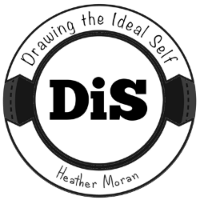About Drawing The Ideal Self
Heather Moran
Drawing the Ideal Self is a technique based on the philosophy and theory of Personal Construct Psychology (George Kelly, 1955). It is a versatile, engaging and straightforward assessment technique which can help therapists, counsellors and teachers and social workers.
The idea of Drawing the Ideal Self is to help the client to explore their view of themselves, something which can be difficult for people to put into words.
In my view, psychological assessment should be illuminating, useful and not be critical of a person. In PCP philosophy, the client is assumed to be doing their best to make sense of themselves and their experiences, regardless of age or ability. Therefore, assessment should make sense to the client and to people who try to support the client. I hope that these things are true of Drawing the Ideal Self.
Using Drawing the Ideal Self requires a curiosity about the client; a genuine openness to understand how they make sense of themselves. My view is that any technique I would use with a client should feel interesting to both the client and facilitator. A psychological technique should also feel comfortable to use, both for the client and the facilitator. The client should also feel the result represented them pretty well. My experience and feedback from other professionals is that they have found the information produced by Drawing the Ideal Self useful in guiding their interventions.
I always recommend that facilitators try the technique on themselves so they get an idea of its validity. There are three parts to the task, first exploring the way a person does not want to be, then their ideal person and finally a rating scale between the two. The technique has been published and is often used by psychologists and education professionals. Although the Drawing the Ideal was developed in my work with young people, it is suitable for use with clients of any age.
COMPLETELY FREE TO DOWNLOAD AND USE!


I make these resources free because I believe that professionals should help each other to become better at psychological assessment and therapy. I hope you won't feel that this diminishes their usefulness or validity. I always love to hear from people who have tried the technique and found it helpful. If you have any feedback or questions, please do get in touch with me using the address in my documents or the form on the contact page.
